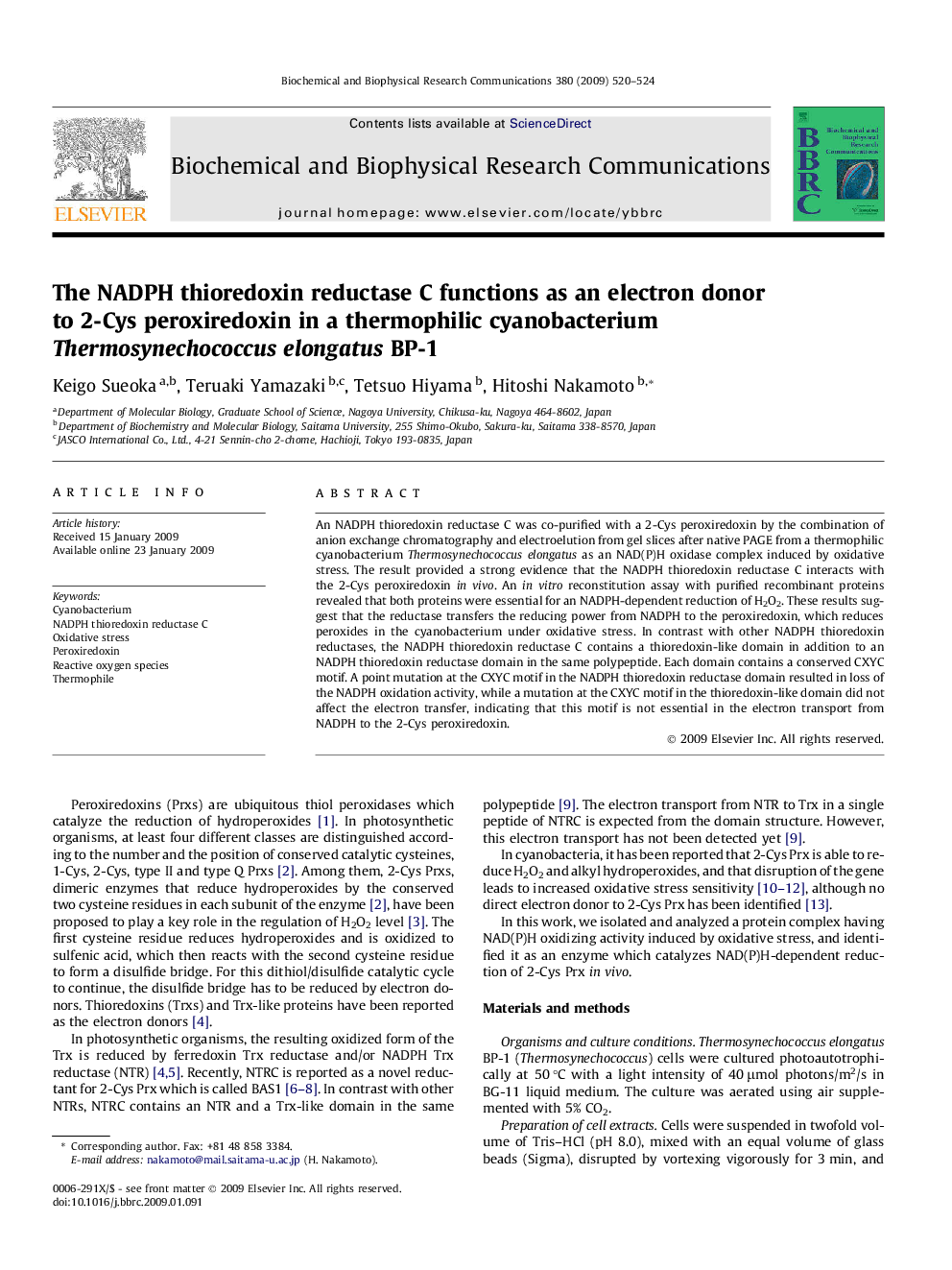| Article ID | Journal | Published Year | Pages | File Type |
|---|---|---|---|---|
| 1933894 | Biochemical and Biophysical Research Communications | 2009 | 5 Pages |
An NADPH thioredoxin reductase C was co-purified with a 2-Cys peroxiredoxin by the combination of anion exchange chromatography and electroelution from gel slices after native PAGE from a thermophilic cyanobacterium Thermosynechococcus elongatus as an NAD(P)H oxidase complex induced by oxidative stress. The result provided a strong evidence that the NADPH thioredoxin reductase C interacts with the 2-Cys peroxiredoxin in vivo. An in vitro reconstitution assay with purified recombinant proteins revealed that both proteins were essential for an NADPH-dependent reduction of H2O2. These results suggest that the reductase transfers the reducing power from NADPH to the peroxiredoxin, which reduces peroxides in the cyanobacterium under oxidative stress. In contrast with other NADPH thioredoxin reductases, the NADPH thioredoxin reductase C contains a thioredoxin-like domain in addition to an NADPH thioredoxin reductase domain in the same polypeptide. Each domain contains a conserved CXYC motif. A point mutation at the CXYC motif in the NADPH thioredoxin reductase domain resulted in loss of the NADPH oxidation activity, while a mutation at the CXYC motif in the thioredoxin-like domain did not affect the electron transfer, indicating that this motif is not essential in the electron transport from NADPH to the 2-Cys peroxiredoxin.
